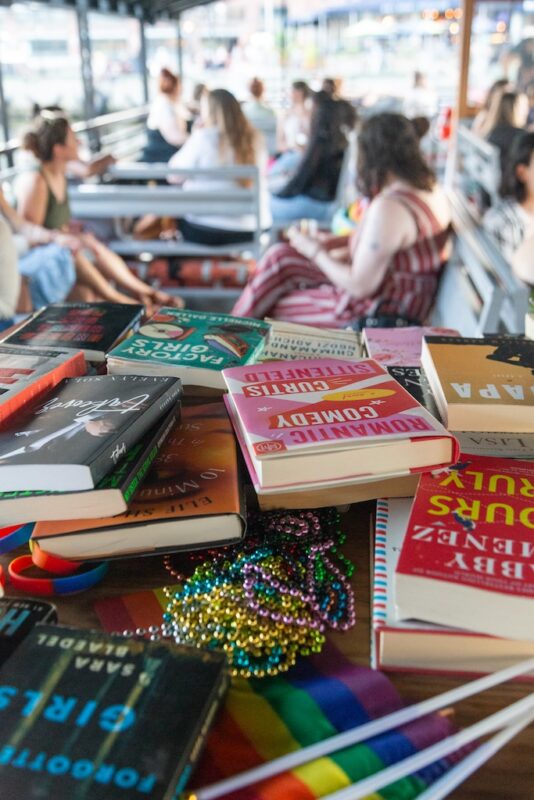The internet was a lot this week.Highlights: IMDb, bad projectors, Giancarlo Esposito, De La Soul, head injuries, the woes of skiing, Alex Murdaugh, land-grab universities, capping insulin, and people really need to leave this Selena Gomez and Haley Bieber drama alone.
Wired: Meet the Superusers Behind IMDb, the Internet’s Favorite Movie Site
At one point in my life I was ON IMDb. I was almost constantly looking someone or something up on that platform. The crowdsourced website has “over 83 million registered users of IMDb in the world,” but only a small fraction contribute to the site. While historically, these superusers typed out information by hand, now some users are utilizing AI to automate the process, which “doesn’t sit well with some contributors, who take to the community forums to debate automation.” IMDb has always been on the cutting edge—it is five years older than Wikipedia—and now it is also leading the AI debate even if when “the smartest AI can’t find the kind of data super contributors track down in the physical world, on rare film reels and in dusty collections.”
Vulture: Bad Projection Is Ruining the Movie Theater Experience
I’ve yet to see a film in the theater since the pandemic began. The cause for this is a confluence of things: I’ve been watching more TV than films, I enjoy concessions but would not be comfortable taking my mask off, and it is something that I don’t really miss. While the pandemic did impact movie theaters and Hollywood’s supply chain of films, “picture problems” and problems with the quality of projections “predated COVID-19. Many can be traced to 2009, when theaters swapped their film projectors for digital ones, made primarily by Sony, to show the original Avatar.”
Initially, cinemas were excited to switch from film to digital projectors—it made it easier and cheaper to distribute movies and “digital projectors could be programmed to run on their own without human projectionists to start them up and switch reels.” However, projectionists “were highly skilled engineers and troubleshooters. Now that multiplexes use automated projection, problems fall to house managers, who, in this age of austerity, may be the same overworked employees ripping tickets and selling popcorn. If an error is serious or demands more than a wiped lens or system reboot, it might have to wait a couple weeks for a visit from a technician.” I’m not going to lie, reading this did not convince me to go back to the theater.
The New Yorker: Giancarlo Esposito Controls the Chaos
Giancarlo Esposito has been around for a long time, but over the past decade it seems like he is everywhere! Known for his portrayals of menacing villains (think “Gus Fring, the fussy, stoical drug lord of ‘Breaking Bad’ and ‘Better Call Saul’… Or Stan Edgar, the biotech C.E.O. who manufactures superheroes in Amazon’s Marvel satire ‘The Boys’”) “its become a cliché to observe that Esposito is actually a very nice guy,” but that is exactly how he comes off in this profile by Julian Lucas. And I, for one, will continue to watch anything he is in.
On Friday De La Soul’s full catalog was finally made available to stream more than three decades after their debut album. This release also came “after the death of De La Soul’s David Jolicoeur – known as Trugoy the Dove, Plug 2 and Dave.” De La Soul had a massive impact on hip-hop. Timmhotep Aku “talk[s] to artists about the influence the Long Island rappers had locally and outside of New York City,” in this memorial-profile of the group.
The New Yorker: The Forgotten History of Head Injuries in Sports
Chronic traumatic encephalopathy, or C.T.E., is a form of dementia “thought to be caused by concussions—injuries in which the brain is twisted or bumped against the inside of the skull—and by recurring subconcussive blows to the head.” The condition has been branded by the media as a new revelation, however, Stephen Casper, a historian of medicine, disagrees.
After being hired in 2015 by lawyers for “a group of retired hockey players who were suing the National Hockey League, their suit argued that the N.H.L. had failed to warn them about how routine head punches and jolts in hockey could put them at risk for degenerative brain damage, Casper constructed “a timeline of how knowledge on head injuries evolved from the eighteen-seventies onward, he drew on more than a thousand primary sources, including medical-journal articles, textbooks, and monographs.”
Some experts think more studies should be done on C.T.E. before coming to any conclusions about its cause, but “Casper believes that the science was convincing enough long ago. ‘The scientific literature has been pointing basically in the same direction since the eighteen-nineties… Every generation has been doing more or less the same kind of studies, and every generation has been finding more or less the same kinds of effects.’”
Even with all of this knowledge, spanning decades, pointing to the same conclusion, violent contact sports continue. Culturally, we have accepted their risk, but how long can we ignore what we know? And, as Ingfei Chen questions here, how and when are viewers complicit? “When does the state of knowledge obligate us to change contact sports further—or alter our views of them?”
Outside: I Spent 7 Straight Hours On A Chairlift. Here’s What I Learned About Why We Still Ski.
I started constantly snowboarding again for the first time in over 10 seasons this year. Growing up, my family used to go skiing almost every other weekend, but when I left for school, I mostly stopped. I hadn’t realized how much I missed the sport until I started snowboarding again.
Usually, I go to resorts in Michigan, for numerous reasons, but mainly that my equipment is there, and they are a lot cheaper and much less crowded than the large mountains in the west (I do, however, lose out on powder).
In general, skiing and snowboarding are “getting harder and harder to do. The average weekend warrior encounters increasingly insurmountable obstacles on their journey to the mountain: traffic chokes the highways; lift ticket prices are extortionary; climate change has made powder days scarcer. Even if our hero could move closer to the slopes, Airbnb and remote work have decimated ski-town housing.” Tickets at many resorts in the west are $200 for a day pass—one recently exceeded $300. But with all of these barriers, why do people still ski?
Gloria Liu spent 7 hours on a chairlift interviewing everyone she encountered to answer this question. Along the way, through a series of comical conversations, Liu discovered that “asking why we keep skiing on a warming planet feels like asking why we keep loving in a world that’s careening towards disaster,” and discovered that “skiing is an imperiled sport, but it’s still a beautiful sport. If you fall in love with it today, it could end up like a bad marriage. But maybe you’ll let yourself fall in love anyway, because however long the romance lasts, you could find moments that contain a multitude of joy.”
NPR: Why America is obsessed with the Alex Murdaugh murder trial
I knew nothing about the Alex Murdaugh murder trial or the Murdaughs until HBO released their docu-series ‘Low Country: The Murdaugh Dynasty’, in November. That series was shortly followed by one from Netflix that came out last month, and both series primed the public for the murder trial that concluded this week. Alex Murdaugh, a once revered attorney in South Carolina from a prominent family, was found guilty of murdering his wife and youngest son by a jury Thursday night after a five week long trial. The double murder of Maggie and Paul Murdaugh were two of a series of deaths and murders that lead to an investigation into the family and their finances, eventually leading to the end of a dynasty.
High Country News: Land-grab Universities
I grew up on the campus of the “pioneer land-grant university,” although that is something I only learned recently. Land-grant universities were created in 1862 when President Abraham Lincoln signed the Morrill Act, which “worked by turning land expropriated from tribal nations into seed money for higher education. In all, the act redistributed nearly 11 million acres — an area larger than Massachusetts and Connecticut combined. But with a footprint broken up into almost 80,000 parcels of land, scattered mostly across 24 Western states, its place in the violent history of North America’s colonization has remained comfortably inaccessible.” Now, with thriving institutions across the country, Robert Lee and Tristan Ahtone delve into the violent history of their creation in this longread from 2020.
CNN: Eli Lilly to cut insulin prices, cap costs at $35 for many people with diabetes
Pharma giant Eli Lilly “announced Wednesday a series of price cuts that would lower the price of the most commonly used forms of its insulin 70% and said it will automatically cap out-of-pocket insulin costs at $35 for people who have private insurance and use participating pharmacies.” This is massive news as “at least 16.5% of people in the US who use it report rationing it because of cost.” It is time to do this for more medicines!
Glamour: Selena Gomez and Hailey Bieber: A Complete Timeline of Their TikTok Drama
To be honest, I do not fully understand the feud between Hailey Bieber and Selena Gomez, but it has been DOMINATING TikTok and the timelines all week. The “feud” between Bieber and Gomez allegedly began in “2018 when news broke that Justin Bieber had proposed to Hailey Baldwin just six months after his final breakup with Selena.”
The “accusations that Hailey “stole” Justin from Gomez quickly spiraled out of control as social media users picked apart every post made by these grown women in search of proof of their feud or of Hailey Baldwin’s alleged obsession with Jelena. No matter what either woman did to shut down the online hate—including posing together at an event in October 2022—fans continued to speculate for years.”
Then, “in February 2023 when Kylie Jenner seemingly joined the fray,” and now “Jenner’s ex-best friend Jordyn Woods applied a Rare Beauty product in a since expired Snapchat video with the caption ‘Love this lip liner.’ Rare Beauty, of course, is owned by Selena Gomez, while Jenner’s own company, Kylie Cosmetics, is known for its lip kits. Fans think this was Woods’s way of picking a side.” People need to let this go.






